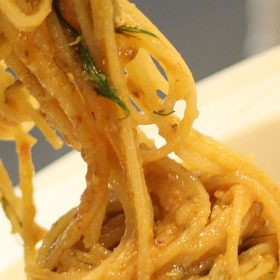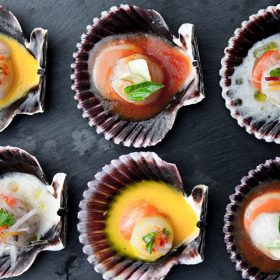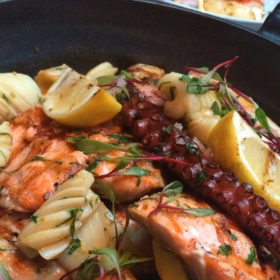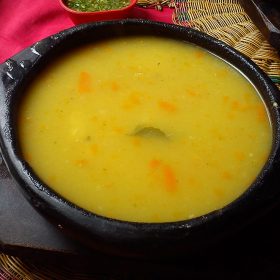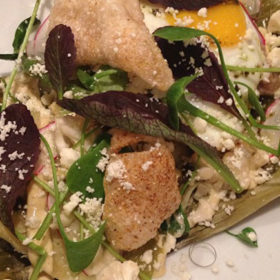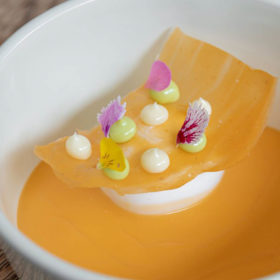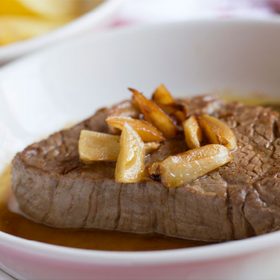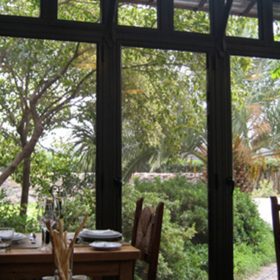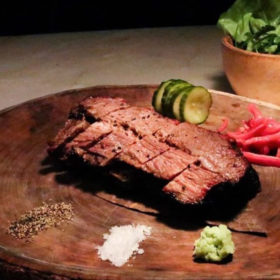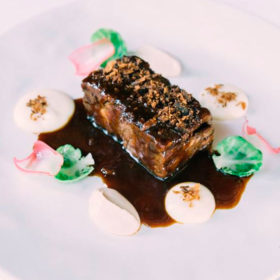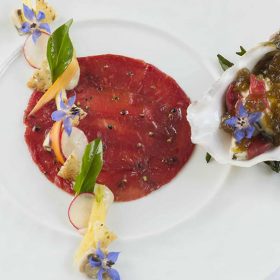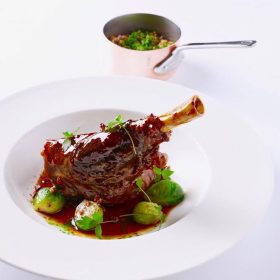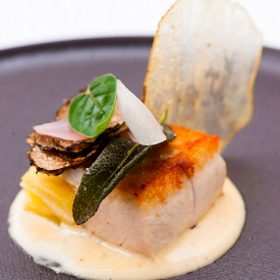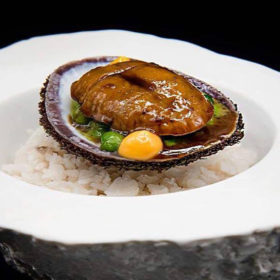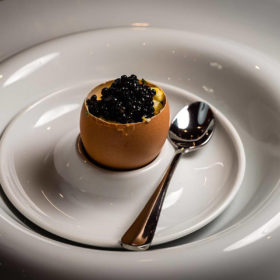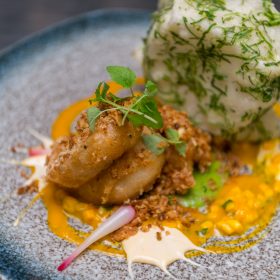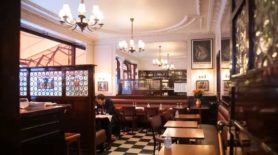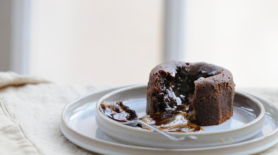Understanding restaurant Awards
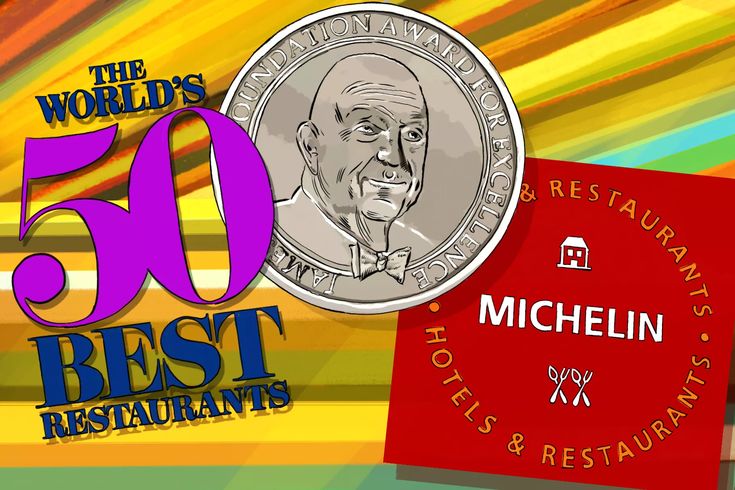
A Handy Guide to Understanding Restaurant Awards
World’s 50 Best Restaurants, James Beard Foundation Awards, and Michelin stars — explained
This story was originally published on May 1, 2017 and has been updated to reflect current information.
Who runs the world’s best restaurants? Who runs the best restaurants in the U.S.? It depends upon whom you ask. Just as there is no one definitive authority on global cinema — some look to the Oscars, others to the BAFTAs or the Independent Spirit Awards — there is no single institution with a monopoly on culinary accolades. Accordingly, here’s a quick look at the World’s 50 Best List, Michelin, and the James Beard Foundation — three of the most prominent domestic and international gastronomic awards organizations — and why they matter.
Who is behind the awards? The James Beard Foundation, a New York-based not-for-profit group that provides scholarships to culinary students, hosts guest chef dinners, and holds annual awards ceremonies that celebrate both the American hospitality industry and food media. The restaurant and chef awards began in 1990.
How are the winners selected? By a panel of 600-plus judges who vote online. Of those judges, 300 are previous chef and restaurant award winners; 250 are regional panelists; and 18 are members of the senior restaurant awards committee.
How many restaurants make the cut? There are 11 national categories, including Best New Restaurant, Rising Star Chef, Outstanding Pastry Chef, Outstanding Restaurateur, and Outstanding Restaurant. There are also regional Best Chef awards for New York City, the Great Lakes, the Mid-Atlantic, the Midwest, Northeast, Southeast, Southwest, and West. Each category typically has five finalists and one winner.
What is the geographic scope of the list? Any restaurant anywhere in the U.S. is eligible. International restaurants are not considered.
What type of restaurants does James Beard celebrate? All sorts of venues. The national winners tend to be reasonably mainstream European-leaning spots. That said, last year’s Rising Star Chef was Zachary Engel, formerly of the modern Israeli restaurant Shaya; Michael Solomonov, in turn, won best chef for his Israeli-themed Zahav. The best new restaurant in 2018 went to Seattle’s JuneBaby, which celebrates the foods of the American South. It was the first time that award went to a black chef, Edouardo Jordan.
This year, the Asian-inclined Majordomo, the Korean Atomix, and the Middle-Eastern Bavel are all leading candidates for the best new restaurant award.
How is the list flawed? The Beards focus on regions over cities for the Best Chef categories. There is no one Best Chef for San Francisco or Los Angeles, but rather for all of California, Nevada, and Hawaii. The one exception is New York City, which has its own winner apart from the larger mid-Atlantic.
These groupings are particularly unfortunate not just because they reflect a Big Apple bias but also because picking a single winner in an arbitrary region comes at the expense of championing local nuance. Or as as a separate Eater analysis puts it more bluntly: “most winners come from large cities, shutting out small-town chefs.” And just the same, would it be the worst thing if the Beards had separate awards for, say, Dallas, Austin, and Houston, instead of throwing all of Texas together with Arizona, Colorado, Oklahoma, New Mexico, and Utah?
And while the Beards represent female chefs and hospitality professionals better than 50 Best (really, anyone represents women better than 50 Best), the Beards, like Michelin, still have work to do in this regard, with historical data showing that women are much less likely to be nominated, or win, than men.
Last year, however, in the first Beard awards following the ascendancy of the #MeToo movement, voters showed signs of moving away from the industry’s white male dominance. If one counts pastry and baking (but excludes non-culinary categories like service, wine, and design), women or people of color or both won 11 out of 16 national awards in 2018. Following reports of sexual harassment by Mario Batali, Ken Friedman, and others, voters were instructed to avoid nominating restaurants or chefs of concern.
Can the winners be bought? The rules are stricter than with the World’s 50 Best Restaurants list. Judges cannot solicit free meals nor can they vote for a restaurant or chef from which they have received a complimentary meal. Judges are asked to remain anonymous, though the names of the restaurant awards committee, who are also voters, are published on the Beard website. And I should disclose here that I’m am a Beard Award voter (not committee member).
Should I use this list as a dining travel guide? Not really, and to be fair, the Beards, unlike Michelin or 50 Best, do not market themselves as such. Generally speaking, there are too many rules regulating who qualifies for what category in a given year to make the Beards a useful travel guide (i.e. a restaurant that wins a previous year can’t win again the following year). That said, some of those same rules can give the casual reader a different and more interesting starting point for research than local publications, which often focus on newer venues. Awards like Outstanding Restaurateur and Restaurant, for example, focus on establishments open for 10 years or longer.
Who is behind the list? William Reed Media, a business-to-business media company that grew out of a grocery information service in 1862. The World’s 50 Best List, which debuted in 2002, is by far William Reed’s most high-profile brand.
How are the winners selected? By a panel of about 1,040 judges composed almost equally of food writers, chefs, and well-traveled gourmands. Those judges, who are asked to remain anonymous (save for regional chairs and vice chairs, published on the World’s 50 Best website), cannot vote for restaurants in which they have a financial stake and they must have dined at restaurants they vote for within the last 18 months.
How many restaurants make the list? Fifty (it’s called the World’s 50 Best Restaurants, duh), but recently more attention has gone to the “consolation” portion of the guide, the 51-100 slots. The so-called back fifty, released a week before the full awards, clues readers in on who’s fallen off the proper list (as was the case in 2016 with Thomas Keller’s Per Se and French Laundry) and which venues might eventually graduate to the top 50.
What’s the geographic scope of the list? Global. Having no assigned geographic scope has allowed 50 Best to bring international attention to restaurants from Australia (Attica), South America (Central, D.O.M.), and Russia (White Rabbit), areas that Michelin has either avoided or only explored after the success of 50 Best.
Who is behind the stars? Michelin, Europe’s largest tire maker. The Michelin brothers founded the guide in 1900 as a way to get chauffeurs to drive more — and buy more tires. The guide’s modern starred system debuted in 1936. One star indicates a “very good restaurant in its category.” Two stars means “excellent cooking, worth a detour.” Three stars, the highest Michelin accolade, conveys “exceptional cuisine, worth a special journey.”
How are the winners selected? By anonymous inspectors whose meals are paid for by their employer. The inspectors reportedly fill out comprehensive reports following their meals. Michelin has been cagey as to precisely what’s in these reports but they’ve stated recently that for a venue to receive three stars the decision of the inspectors have to be unanimous.
How many restaurants make the guide? Unlike the 50 Best list there here is no limit to how many venues can qualify for stars or Bib Gourmands. If restaurant is in a qualifying city, and if it makes the cut, it gets the star.
What is the geographic scope? Michelin is more constrained globally than 50 Best, only awarding stars for cities in which the guide publishes. The deepest coverage is reserved for Western Europe and Japan. France is home to 27 restaurants with three stars, while Japan has 25. Together, that’s about 40 percent of the world’s 120 or so restaurant with Michelin’s top accolade. Michelin also publishes in New York, the San Francisco Bay Area (the U.S. region with the most three star spots), Chicago, Washington, Shanghai, Seoul, Sao Paulo, Rio de Janeiro, Macao, Hong Kong, Singapore, and Bangkok.
There are no guides for Mexico City, Lima, anywhere in the American South, Australia, South Asia, or quite frankly most of the southern hemisphere. This year the guide will return to Los Angeles and expand its scope to all of California; the state tourism board paid $600,000 to help with the inspectors’ costs.
What type of restaurants does Michelin celebrate? Most restaurants at the two- and three-star level are expensive tasting-menu spots, though Michelin has been making an effort to show off more diverse and affordable fare at the one-star level. The anonymous inspectors have awarded stars to three separate ramen spots in Japan, and in New York, the guide has been doling out stars to slightly more affordable and accessible spots outside of Michelin’s Western European and Japanese comfort zones, like Mexican mole temple Casa Enrique, Korean noodle soup shack Jeju, and Oaxacan-themed Claro. The irony of course is that while Michelin celebrates these three restaurants it ignores venues of the same vein in Mexico City, Issan, or Mumbai, where the guide doesn’t publish.
Michelin also does a decent (if not stellar) job at representing women. It’s hard to think of too many critically heralded female chefs without a star, though the ranks of women with three stars (Elena Arzak, Anne-Sophie Pic, etc), is thin and European-heavy. This year, Michelin finally awarded Atelier Crenn in San Francisco with its highest honor, making Dominique Crenn the only female chef in the U.S. to hold three stars.
How is the guide flawed? Despite the fact that the guide doesn’t have any limitations on the style of cuisine it covers; the starred ranks largely exclude more casual fare. When the guide debuted in Bangkok, it could only find a single street vendor — Raan Jay Fai — worthy of a star. Michelin has also failed to recognize two of America’s signature cooking styles with stars: barbecue or pizza.
The restaurant blurbs themselves are poorly written. It’s almost impossible to tell why one particular venue has received a star, and another, two or three. Michelin also rarely offers compelling explanations as to why they take positions that are contrary to that of local critics (in New York, Olmsted and Cosme have been long overlooked). Inspectors are among the most diligent and well-eaten food writing professionals; it’s a shame the guide doesn’t give them more latitude to make a cogent argument for why they celebrate the restaurants they do and why they omit the restaurants they leave out.
Of particular note is the fact that Michelin shows no sign of taking reports of harassment or other abuse into consideration when awarding or withholding stars. Mario Batali’s Babbo, Casa Mono, and Del Posto all kept their honors in last year’s New York guide. The chef has since reportedly divested of his empire.
Can the winners be bought? No; the inspectors are almost impossible to spot.
Should I use this list as a travel guide? Not exclusively, but if Michelin covers the city you’re visiting, the starred restaurants will likely reflect a decent crop of the region’s more expensive and celebrated venues. At the very least, the Michelin guide is essential reading for scouting purposes; knowledge of the restaurants the red guide covers will give you a solid starting point for filtering through local reviews and opinions. And say what you will about the stars, but they’re a solid international standard for technically-competent food, if not necessarily interesting food.


